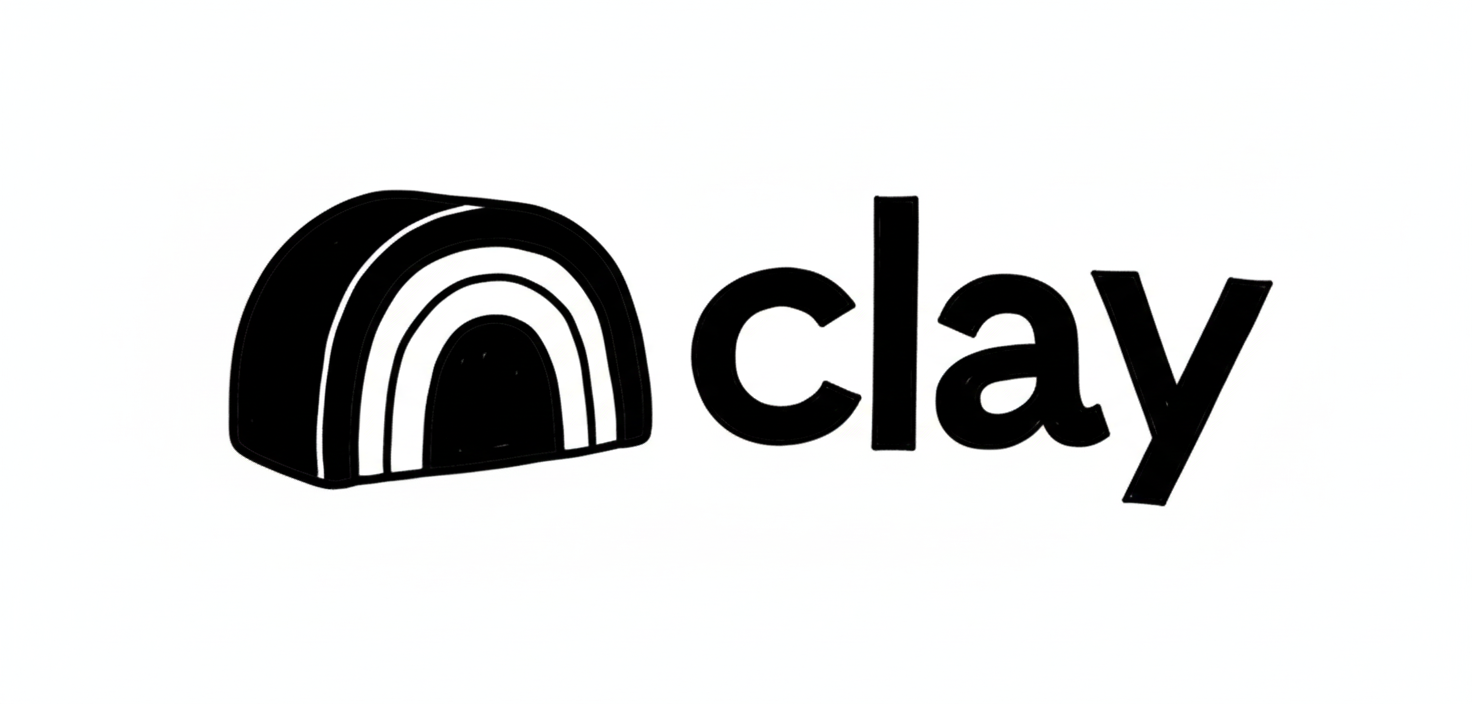Clay has evolved from pure data enrichment tool into what might be the most powerful GTM platform currently. While many teams struggle to get it going, the ones that do see awesome results.
Clay isn’t just another sales tool competing for space in your tech stack. It’s a comprehensive GTM platform that combines over 75 data enrichment tools, leveraging AI to automate personalized outreach and sales processes. With 5,000+ customers including OpenAI and HubSpot, and 6x revenue growth in 2024, Clay has proven itself as an essential part of modern revenue operations.
The secret to Clay’s explosive growth lies in understanding what it actually does: it’s essentially an enrichable Airtable or Google Sheet where you can build a list of people or companies, add relevant data from hundreds of premium data sources, run some AI workflows on top, and filter it down to exactly who you want to reach. Think of it as the intermediary between your raw prospect data and your revenue-generating activities.
Two Nuanced Insights That Will Change How You Think About Clay
1. Clay’s Credit System Reveals Your GTM Blind Spots
Most teams approach Clay’s credit-based pricing as a limitation to manage, but Clay’s founders deliberately chose usage-based pricing over per-seat pricing because “all the value is in the columns because every column you add is a new enrichment”. It was a philosophical choice reflecting how they design the tool.
Your credit consumption ROI become a fascinating window to your GTM strategy effectiveness. Teams burning through credits that are not happy with what comes out the other end are essentially paying to learn that their ICP definition needs work. The most successful Clay users I’ve researched develop what they call “credit discipline” - they focus heavily on efficient credit use because it reflects great GTM strategy - “enriching account or contact records that aren’t a good fit for your business is a waste”.
This creates a virtuous cycle: better targeting reduces wasted credits, which allows for more valuable enrichment and more valuable prospects, leading to higher conversion rates and more revenue per credit spent.
2. The “GTM Engineer” Role Is Clay’s Superpower
The challenge most face with Clay is not “will it provide value if implemented” it’s “how can we implement”. It requires a specific resource: a GTM engineer with enough company context to architect the right waterfalls and workflows, and the technical skills to implement them.
GTM engineers are a rapidly growing role, with about 100 GTME job listings going live every month. These aren’t traditional sales ops people or typical engineers. They’re a hybrid who understand both commercial strategy and the technical implementation. Both are required to extract maximum value out of Clay.
Companies like Verkada use GTM engineers to automate 80% of SDR workflows so reps can book 4x the number of meetings per month (80-100 per rep). Without this role, most teams never progress beyond basic data enrichment and miss Clay’s potential.
Zero to One: Best Practices for Immediate Value.
Start With Your Data Foundation
Clay’s power multiplies when your data is clean. Every win traces back to clean, enriched, well-modeled data. Before building complex workflows, audit your CRM data quality. Clay can help identify and fix data gaps, but garbage in still equals garbage out. You need some high quality data points to build off of, which Clay call “corner pieces” in their “Jigsaw” framework.
Begin with a simple audit project: upload some of your existing data to Clay and try to run some basic enrichment on company size, industry, and technology stack. Any gaps will guide you to data hygiene priorities.
Master the Waterfall Strategy
Clay’s true power lies in its ability to query multiple data sources sequentially. Users can access 100+ premium data sources through Clay’s combination of data providers, using the best aggregate results across a waterfall of data sources.
Set up your enrichment waterfalls to try the highest-quality (and often most expensive) data sources first, then fall back to alternatives if no data is found. This maximizes data quality while minimizing credit consumption.
Leverage Agents for Competitive Intelligence
Clay has its own agent called Claygent that can gather unstructured data from various online sources. While most teams use it for basic contact enrichment, clever operators use Claygent to monitor competitor hiring patterns, product launches, website changes and more.
Create Claygent workflows that monitor competitor job postings, recent news mentions, and technology adoptions. This intelligence often reveals sales opportunities weeks before traditional signals appear in your CRM.
Note that Clay also gives the ability to plug in specific models, like the recently released GPT-5 so you can customize to your heart’s content.
Implement Scheduled Automation
Clay’s scheduling feature lets you automate GTM workflows to keep your CRM data fresh, run always-on outbound campaigns, and power ABM strategies without manual updates. This is where Clay transforms from a tool you use to living system.
Set up weekly enrichment jobs for new leads, monthly competitive intelligence updates, and quarterly ICP analysis. The goal is building what Clay calls “always-on” workflows that continuously improve your data quality and surface new opportunities.
Implementation Recommendations
Week 1: Foundation Building
- Audit your current prospect data quality
- Set up basic company and contact enrichment workflows
- Establish credit usage baselines and alerts
Week 2: Waterfall Development
- Create multi-source enrichment waterfalls for key data points
- Test Claygent for your specific use cases
- Document your most effective enrichment sequences
Week 3: Automation Setup
- Implement scheduled workflows for ongoing data maintenance
- Create lead scoring models based on enriched data
- Set up integration flows to your CRM and outreach tools
Week 4: Optimization and Scaling
- Analyze credit usage patterns and optimize workflows
- Train team members on your established processes
- Plan advanced use cases and experimental workflows
The Strategic Shift Clay Enables
Clay represents something larger than operational efficiency - it’s enabling a fundamental shift in how revenue teams think about data, timing, and personalization. The teams extracting maximum value aren’t just using Clay as a better data enrichment tool; they’re rebuilding their entire GTM motion around always-on intelligence.
The companies seeing transformational results understand that Clay isn’t competing with their existing tools - it’s providing the data layer that makes every other tool more effective. When your CRM, email sequences, and sales conversations are all powered by richer, more current data, every touchpoint becomes more relevant and more likely to convert.
Clay’s 6x growth in 2024 and $1.25B valuation reflects this reality: in an increasingly noisy market, the teams with better data win. Clay provides the infrastructure to build and maintain that data advantage at scale.
Resources:

